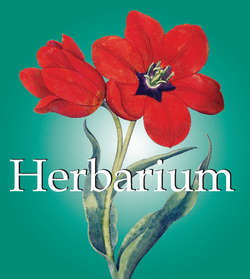Читать книгу Herbarium - Klaus H. Carl - Страница 3
ОглавлениеA herbarium, or Hortus Siccus, is a collection of plants that have been dried and preserved so as to illustrate as far as possible their different characters. Since the same plant, owing to peculiarities of climate, soil and situation, degree of exposure to light and other influences may vary greatly according to the locality in which it occurs, it is only by gathering together, for comparison and study, a large series of examples of each species that the flora of different regions can be satisfactorily represented. Even in the best-equipped botanical garden it is almost impossible to have more than a very small percentage of the representatives of the flora of any given region or large group of plants. Hence, a good herbarium forms an indispensable part of a botanical museum or institution. There are large herbaria at the British Museum and at the Royal Botanic Gardens at Kew, and smaller collections at the botanical institutions at the principal British universities. Linnaeus’ original herbarium is in the possession of the Linnaen Society of London. It was purchased from the widow of Linnaeus by Dr. (later Sir) J. E. Smith, one of the founders of the Linnaen Society, and after his death was bought by the society. Herbaria are also associated with the more important botanical gardens and museums in other countries.
Introductory plate: Hortus Eystettensis
Plantarum Horti Eystæt
Tensis
Claffis Verna
Introductory plate: Spring
I. Ruscus aculeatus
Butcher’s Broom
Liliaceae-Asparagales
II. Philadelphus coronarius
Double-flowered Mock-orange
Hydrangeaceae
III. Philadelphus coronarius
Single-flowered Mock-orange
Hydrangeaceae
I. Cercis siliquastrum
Judas Tree
Leguminosae-Caesalpinia
II. Maianthemum bifolium
False Lily of the Valley
Liliaceae
III. Botrychium lunaria
Moonwort
Ophioglossales-Pteridophyta
IV. Chrysosplenium oppositifolium
Golden Saxifrage
Saxifragaceae
I. Prunus specie
Double-flowered Cherry
Rosaceae
II. Prunus padus
Bird Cherry
Rosaceae
III. Picea abies
Branch and cones of the Norway Spruce
Conifer
The value of a herbarium is much enhanced by the possession of “types”, that is, the original specimens on which the study of a species was founded. Thus the herbarium at the British Museum, which is especially rich in the earlier collections made in the eighteenth and early nineteenth centuries, contains the types of many species founded by the earlier workers in botany. It is also rich in types of Australian plants from the collections of Sir Joseph Banks and Robert Brown, and contains in addition many valuable modern collections. The Kew herbarium, founded by Sir William Hooker and greatly developed by his son Sir Joseph Hooker, also contains many types, especially those of plants described in the Flora of British India and various colonial floras. The collection of Dillenius is deposited at Oxford, and that of Professor W. H. Harvey at Trinity College, Dublin. The collections of Antoine Laurent de Jussieu, his son Adrien and August de St. Hilaire are included in the large herbarium of the Jardin des Plantes in Paris. In in the same city is the extensive private collection of Dr. Ernest Cosson. In Geneva are three large collections – Augustin Pyramede Candolle’s, containing the typical specimens of the Prodromus, a large series of monographs of the families of flowering plants, Benjamin Delessert’s fine series at the Botanical Garden and the Boissier Herbarium, which is abundant with Mediterranean and Oriental plants. The largest collection ever made by a single individual (exceeding 40,000 specimens), that of Professor Griesbach, was bequeathed to the University of Göttingen. At the herbarium in Brussels are the specimens obtained by the traveller Karl Friedrich Philipp von Martius, the majority of which formed the groundwork of his Flora Brasiliensis. The Berlin herbarium is especially rich in more recent collections, and other national herbaria sufficiently extensive to meet the requirements of the systematic botanist exist in St. Petersburg, Vienna, Leiden, Stockholm, Upsala, Copenhagen and Florence. Of those in the United States of America, the chief herbarium, formed by Asa Gray, is the property of Harvard University; there is also a large one at the New York Botanical Garden. The herbarium in Melbourne, Australia, under Baron Müller, is of large proportions, and that of the Botanical Garden of Calcutta is noteworthy as the repository of numerous specimens described by writers on Indian botany.
I. Malus specie
Double-flowered Apple
Rosaceae
II. Lychnis viscaria
Sticky Catchfly
Caryophyllaceae
III. Campanula patula
Spreading Bellflower
Campanulaceae
I. Staphylea pinnata
Bladdernut
Staphyleaceae
II. Vinca minor
White-flowered Lesser Periwinkle
Apocynaceae
III. Vinca minor
Lesser Periwinkle
Apocynaceae
IV. Vinca minor
Mauve-flowered Lesser Periwinkle
Apocynaceae
V. Vinca minor
Double-flowered Lesser Periwinkle
Apocynaceae
I. Laburnum anagyroides
Common Laburnum
Papilionaceae
II. Laburnum alpinum
Alpine Laburnum
Papilionaceae
I. Viburnum opulus
Snowball Bush [Guelder-rose]
Caprifoliaceae
II. Cytisus sessilifolius
Stalkless-leafed Laburnum
Papilionaceae
III. Cytisus ciliatus
Small Alpine Laburnum
Papilionaceae
I. Dorycnium hirsutum
Hairy Canary Clover
Papilionaceae
II. Cytisus supinus / Cytisus hirsutus
Clustered Broom [Hairy Broom]
Papilionaceae
III. Cytisus scoparius
Common Broom
Papilionaceae
IV. Jasminum fruticans
Shrubby Jasmine
Oleaceae
I. Ribes alpinum
Alpine Currant
Grossulariaceae
II. Ribes rubrum
Common Redcurrant
Grossulariaceae
III. Ribes nigrum
Blackcurrant
Grossulariaceae
IV. Ribes rubrum
Redcurrant
Grossulariaceae
V. Ribes rubrum
Whitecurrant
Grossulariaceae
I. Lathraea squamaria
Common Toothwort
Orobanchaceae
II. Erythronium dens-canis
White-flowered Dog’s Tooth Violet
Liliaceae
III. Erythronium dens-canis
Mauve-flowered Dog’s Tooth Violet
Liliaceae
IV. Pulmonaria officinalis
Lungwort
Boraginaceae
V. Primula vulgaris
Mauve-flowered Common Primrose
Primulaceae
I. Primula auricula
Конец ознакомительного фрагмента. Купить книгу
